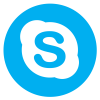Schedule a FREE call with our outsourcing expert now and get a precise quotation that meets your requirements. Don't wait - get started today!
Getting into IT can feel like trying to jump onto a moving train. Everyone talks about the latest certifications or the most in-demand programming languages, but what if you’re just trying to get your foot in the door? That’s where a help desk technical support job comes in—it’s the role that quietly powers most IT teams and builds real-world experience fast.
This isn’t just a gig where you answer phone calls and reset passwords all day. It’s the kind of role that teaches you how systems work, how people interact with technology, and how to fix things when they break—all under pressure. If you’re serious about getting into tech, this is one of the best places to start.
What Exactly Does the Role Involve?
At its core, a help desk technical support job is all about solving problems. You’re the go-to person when someone’s Wi-Fi stops working, a printer refuses to connect, or software suddenly won’t open. You troubleshoot, explain things clearly, and keep everything moving.
Depending on the company, the support might be divided into tiers:
- Tier 1: The first line of defense. You’ll deal with routine stuff—password resets, basic app issues, and device troubleshooting.
- Tier 2: A step up. Think deeper system issues, software installations, or network configurations.
- Tier 3: This is where complex problems go. Often handled by senior technicians or engineers.
What makes the job really interesting isn’t just the tech—it’s the people. You’ll spend your day helping users who might be frustrated or confused, and it’s up to you to guide them through it calmly and clearly.
Why It’s the Perfect Starting Point
Think of a help desk role as the on-ramp to the IT highway. It’s where you pick up the skills, habits, and mindset that can take you much further down the road.
Here’s why it works:
- You learn by doing. This isn’t textbook learning—you’re troubleshooting real issues as they happen.
- It builds your confidence. With every solved ticket, you get a little sharper, a little faster.
- It opens doors. Many help desk professionals move into roles like systems admin, cloud support, or network operations.
- It’s always in demand. Every business needs IT support. That means opportunities across all industries, from healthcare to retail.
What You’ll Need to Land the Role
To move quickly into a help desk technical support job, you’ll want to cover both your technical and interpersonal bases. It’s a mix of knowing how systems work and being able to talk to someone through a problem without using a ton of jargon.
Tech-wise, you should be familiar with:
- Operating systems—Windows, macOS, maybe a bit of Linux
- Common hardware—printers, modems, desktops
- Basic networking—think IP addresses, DNS, routers
- Tools like Zendesk, Freshdesk, or other ticketing systems
- User account management via Active Directory
- Office tools and VPNs (Microsoft 365, Google Workspace, etc.)
And on the people side:
- Be a good listener
- Stay calm when someone’s clearly stressed out
- Explain things simply, without talking down
- Juggle multiple issues at once without losing your cool
If you want to give yourself an edge, go for beginner-friendly certifications like CompTIA A+ or Google’s IT Support cert. They show you’re serious—and they’re quick to complete.
Where to Find These Jobs (Without Getting Lost in the Crowd)
You don’t need to apply to a hundred jobs to find the right one—you just need to know where to look:
- LinkedIn – Great for finding roles through your network
- Indeed/Glassdoor – Tons of listings, updated daily
- Tech forums or subreddits – Surprisingly helpful, especially for entry-level gigs
- Outsourcing providers – Companies like Magellan Solutions are always looking for new support talent
Make sure your resume is dialed in. Show off your experience with actual examples—”Managed 25+ tickets per day using Freshdesk” is much stronger than “responsible for IT support.” And when you apply, customize your cover letter. A little effort goes a long way.
How to Stand Out (Even Without Tons of Experience)
Let’s be honest: you’re not the only one applying. But you can absolutely stand out with the right moves:
- Use numbers. “Helped reduce average resolution time by 20%” tells a story.
- Build a small portfolio. Even a basic blog where you explain how you solved common tech issues shows initiative.
- Get referrals. A recommendation from someone inside a company can move your name to the top.
- Keep learning. Tinker with tech at home. Take free courses. Stay curious.
And when you finally land that interview? Practice. Be ready to walk through a real-life support scenario and explain how you’d solve it.
The Fast Track: Working With Outsourcing Firms
If speed is what you’re after, consider joining a BPO or outsourcing company. These businesses run support operations for multiple clients—often international brands—and always need sharp new hires.
Why’s this a smart move?
- They hire often, which means more opportunities to jump in.
- You get structured training, so you’re not just thrown into the deep end.
- You work with modern tools, gaining exposure to real systems.
- Career growth is built in. Many BPOs promote internally across tiers.
- Remote work? Yep. Hybrid and work-from-home options are more common than ever.
Magellan Solutions is a great example. They support clients across industries and countries, making them a solid launchpad if you’re looking for a real-world way into IT.
A Day on the Job: What It’s Actually Like
Once you’re in, your day won’t be cookie-cutter. Sure, you’ll start by checking your queue of support tickets, but no two requests are the same.
You might be:
- Helping someone connect to a company VPN
- Troubleshooting a glitchy video conferencing tool
- Resetting passwords
- Updating drivers or software remotely
- Escalating a stubborn issue to a higher tier
- Logging everything clearly so the next tech can follow your trail
You’ll also chat with coworkers, join standups, and maybe pitch in on a process improvement idea. It’s collaborative, a little chaotic at times, and always keeps you on your toes.
Where This Role Can Take You
A help desk job isn’t just a stepping stone—it’s a runway. Here’s where it might lead:
- System administration
- Cloud support (AWS, Azure, etc.)
- Network management
- Cybersecurity
- DevOps or site reliability
The more you take on, the more you grow. Companies love promoting from within, especially when they know you’ve learned the ropes through hands-on support work.
Final Word: Start with the Right Partner
If you’re serious about starting a tech career—and you want to do it fast—a help desk technical support job is one of the best decisions you can make.
But don’t go it alone. Work with a company that invests in its people, trains them well, and gives them room to grow. Magellan Solutions does just that. With global clients, real training programs, and a commitment to internal growth, it’s more than a place to work—it’s where you build your future.
Ready to take the first step? Connect with Magellan Solutions today and discover your next big move in IT.















